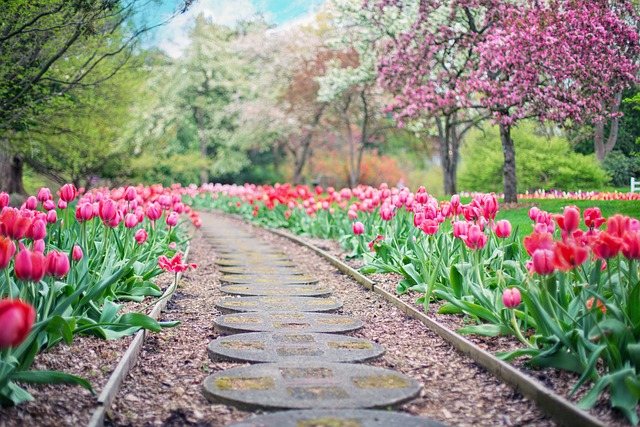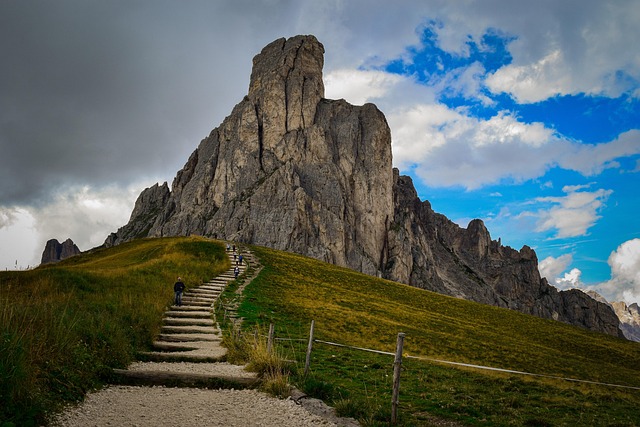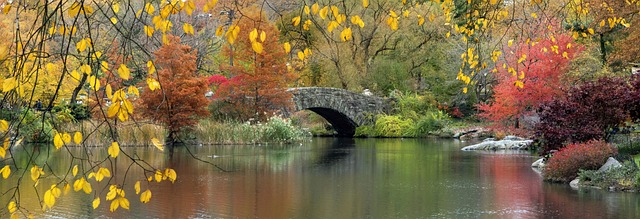Crafting garden paths is an artistic way to enhance your outdoor space, offering both aesthetic appeal and functionality. By exploring diverse materials like stone, wood, gravel, brick, and concrete, you can create unique pathways catering to various landscape styles and atmospheres. Curved lines, straight structures, and decorative elements like moss or lighting transform these paths into captivating focal points, inviting exploration and relaxation in your peaceful sanctuary.
Transform your outdoor sanctuary with decorative garden paths that blend functionality and aesthetics. This comprehensive guide explores the art of crafting stunning pathways, from selecting the perfect material—stone, wood, gravel, brick, or concrete—to designing eye-catching layouts that enhance your space. We delve into safety considerations, ensuring slip-resistant surfaces and proper drainage, while offering tips to personalize your path with plants, sculptures, and lighting. Discover how to create a unique entry point that captivates visitors and elevates your garden’s allure.
- Choosing the Right Material for Your Garden Paths
- – Exploring various options: stone, wood, gravel, brick, and concrete
- – Considerations for climate, budget, and aesthetic preferences
- Designing Pathways to Enhance Your Outdoor Space
Choosing the Right Material for Your Garden Paths

– Exploring various options: stone, wood, gravel, brick, and concrete

When it comes to enhancing your garden or yard with decorative paths, there’s a plethora of options to explore. Natural materials like stone and wood offer timeless elegance, with various textures and colours available that complement different landscape styles. Gravel and brick add a touch of rustic charm, while concrete provides a modern, sleek look. Each material has its unique appeal and can be tailored to suit the overall aesthetic you desire.
Consider the atmosphere you wish to create when making your selection. For instance, stone paths exude a sense of tranquillity and natural beauty, perfect for serene garden spaces. Wood chips or planks create a warm, inviting ambiance, ideal for backyard retreats. Gravel pathways are cost-effective and quick to install, adding a touch of rustic charm. Brick offers durability and can be arranged in patterns for a distinctive look. Concrete paths are versatile and can be stained or painted to match specific themes, making them a popular choice for modern yards.
– Considerations for climate, budget, and aesthetic preferences

When designing decorative garden paths, it’s essential to consider your climate, budget, and aesthetic preferences. Different climates offer unique opportunities for path materials; for instance, in wetter regions, permeable pavers or gravel might be a more sustainable choice that allows water to drain through. On the other hand, drier climates may benefit from drought-resistant options like concrete or stone. Budget plays a significant role too – while natural stone can add a luxurious touch, concrete or wooden planks offer more affordable alternatives without compromising aesthetics.
Aesthetic preferences dictate the path’s visual appeal and functionality. Some prefer the rustic charm of gravel or cobblestones, while others may lean towards sleek, modern concrete designs. Color, texture, and pattern choices should align with your garden’s existing palette and overall style. Remember that garden paths aren’t just functional; they’re an integral part of your outdoor space’s visual tapestry, so let your personal taste guide the creative process.
Designing Pathways to Enhance Your Outdoor Space

Designing pathways is an excellent way to enhance your outdoor space, transforming it from a simple patch of earth into a visually appealing and functional area. When crafting garden paths, consider both aesthetics and practicality. Choose materials that complement your garden’s style—from rustic stone to elegant brick or modern concrete—to create a cohesive look. The path’s design should guide you naturally through the garden, inviting exploration. Well-defined routes encourage leisurely walks and make navigating your outdoor haven a pleasure.
Curved lines and meandering paths add organic beauty, while straight, structured pathways offer a contemporary vibe. Incorporate decorative elements like moss-covered stones, vibrant flowers, or elegant lighting to elevate the space further. Garden paths don’t just lead from point A to B; they become the focus of your outdoor décor, providing a peaceful stroll and enhancing the overall ambiance.
Creating decorative garden paths is an excellent way to transform your outdoor space into a harmonious and visually appealing area. By selecting suitable materials that align with your climate, budget, and design preferences, you can construct pathways that become the highlight of your yard. These paths not only add structural definition but also invite exploration, leading to a more immersive and enchanting garden experience. Whether it’s the rustic charm of stone or the modern elegance of concrete, the right path choices can enhance your overall outdoor living and create lasting memories.
